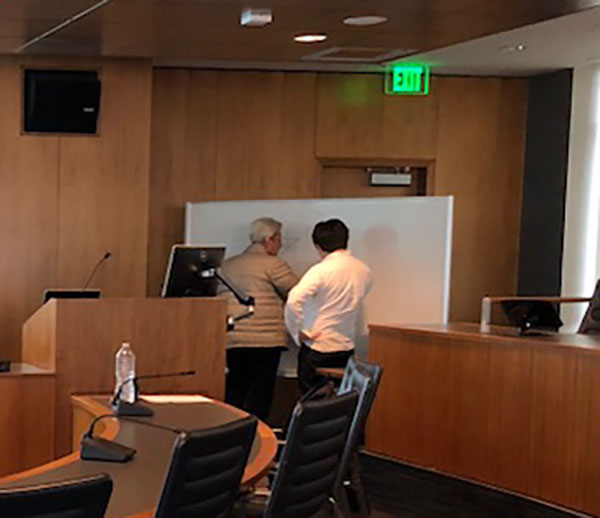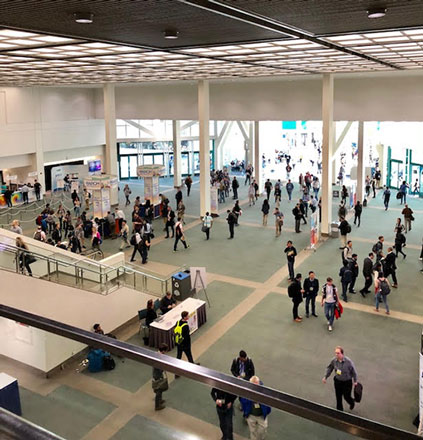Well, I've been packing my bags for the APS March 2018 meeting, but wanted to try observing Airy Rings, so when the clouds parted this lazy astronomer, without a permanent observing dome, grabbed the lightweight tripod with Skywatcher polar tracking mount and found
that Sirius would be a good target of opportunity. Remember that the Airy disk or Airy rings are the result of diffraction from any limited aperture lens system. In this case, I wanted to use the smallest aperture lens setting I could in order to maximize the diffraction effects.
First of all, take a look at the lightweight setup that I can carry out in one hand and easily point the RA axis to Polaris and then turn the camera to any object I want. With all the bright house lights, I had to squint to see Polaris, but once I got close the built in polar scope worked its magic and I could get a pretty good polar alignment.
 |
| Lightweight tracking mount with DSLR pointing to Sirius (Source: Palmia Observatory) |
When doing normal astronomical imaging with the 300mm telephoto lens I would use a stop setting of about f/5.6 to maximize the amount of light through the largest aperture setting. In this case though I want to use the smallest aperture, which for this lens was f/45. Check out the 30 second image of Sirius below:
 |
| Airy disk from Sirius in 300mm DSLR image with f/45 and 30 second exposure (Source: Palmia Observatory) |
You can see at least one Airy ring where the diffraction interference effects create a dark ring of no light. The bright spokes or diffraction spikes coming off the image are due to the f stop iris that is made up of some intersecting planes and is just approximately a circle. With f/45 the lens aperture is probably about 300 / 45 = 6.7 mm. I might have to try doing this later with a more perfect circular aperture of my own making, say maybe 2mm. This smaller aperture will let only about (6.7 /2)^2 = 11 times less light through so the exposure time might have to be increased in order to see anything.
Anyway, maybe I'll try that some time next week, but now it is time to head to Chapman University for the Quantum Studies workshop. I could only fit one day of the workshop into my schedule, but it is hard to miss a chance to hear what Yakir Aharonov has been up to. Remember that Aharonov and Bohm introduced to the so called Aharonov-Bohm effect which describes how the magnetic vector potential is the more fundamental quantity rather than the magnetic field. As shown in the photo below, Aharonov is still actively involved at 85 years old in discussing physics with a participant even before the workshop has started
 |
| Yakir Aharonov helping participant at Chapman University Quantum Studies Workshop |
I know the first time I heard of the Aharonov-Bohm effect I was a bit skeptical because as an engineer I had always used the magnetic field calculations more often than I did the magnetic vector potential calculations and had thought that the magnetic potential was just a mathematical trick that was used to calculate the magnetic field in some problems. But the A-B effect, which is measureable in the laboratory tells us that the magnetic potential is the more fundamental physical property of nature because in some situations where the magnetic field is identically equal to zero, and the magnetic potential is not zero, then some effects on particles are still seen.
Anyway, the emphasis of this workshop was on the new effect that Aharonov has been investigating for many years called the weak measurement effect. I'm not sure I can explain this now, but it strikes me that it will be just as important in helping us understand which of our quantum mechanics concepts are more fundamental and why. We will have to study this more, but for now it is time to head up to the APS March meeting at the Los Angeles Convention Center.
I spent the first day attending the Quantum Information and Spacetime tutorial in the morning and then the Mathematica tutorial in the afternoon. Now I misread the announcement and thought the tutorial was an introduction to Quantum Information, but wow, was I in for a shock in that non other than the expert John Preskill, Caltech and other presenters went into the deep connections between quantum information theory and gravity. In trying to understand black holes it has discovered that the incorporation of information theory into the physics leads to a very rich more fundamental understanding of how gravity and information and entanglement are all related. This was very good, but way more difficult for me in that I had expected to get a more gentle introduction to quantum information theory and not its deeper connection to black holes and gravity.
 |
| John Preskill begin Quantum Info and Spacetime tutorial at APS March 2018 Meeting |
The Mathematica tutorial introduced more of the new features that are now available. I had forgotten how powerful Mathematica is as a tool to help do physics calculations. One of the other features I learned about is some of the deep learning tools already built in and the built in tools available for image analysis. Check out the screenshot below where my first laptop camera image was easily analyzed for edge detection with just the click of one button. Pretty neat!
 |
| Resident Astronomer does some photo edge detection at Mathematica tutorial (Source Palmia Observatory) |
Ok, now its time for the 1000's of solid state and condensed matter physicists to show up for the March meeting. It reminded me of ants coming in for the sugary physics!
 |
| Physicist "ants" arriving at APS March 2018 Meeting at Los Angeles Convention Center (Source: Palmia Observatory) |
I hope later to describe more of some of the sessions that I sat in on. It turns out that I am more comfortable at the APS April meeting, which has an emphasis on astrophysics and gravity, but the March meeting with its emphasis on condensed matter physics was way beyond my primary field of study. But there were many sessions on the history of physics and of the foundations of quantum mechanics that I found pretty interesting. For instance this one session of "What Einstein got Wrong?" was very interesting. Nobel prize winner David Gross discussed how Einstein's goal of understanding all of physics at its most fundamental level kept him motivated all his career, even though Einstein could never quite accept that quantum mechanics represented the best description of nature.
Einstein was so much an early participant in the development of quantum mechanics and his development of special relativity and general relativity are such monumental and fundamental parts of modern physics and yet he could not accept that the description of nature by quantum mechanics could not be the final answer. And it is not, but what the direction to the final answer or more complete answer is, is still not known.
 |
| Nobel laureate David Gross offers great discussion about Einstein at APS March 2018 meeting |
Ok, I hope that first summary makes some sense. I can't work on it any more because it is time to head back to UCI for the Kip Thorne lecture tonight. See you all there!
Until next time,
Resident Astronomer George
There are over 200 postings of similar topics on this blog
If you are interested in things astronomical or in astrophysics and cosmology
Check out this blog at www.palmiaobservatory.com

I want to know about the Skywatcher that you have using for the air rings through out for the http://www.formatgenerator.com/cse-format-generator/.The summary makes better sense to show the work that you have done.
ReplyDelete